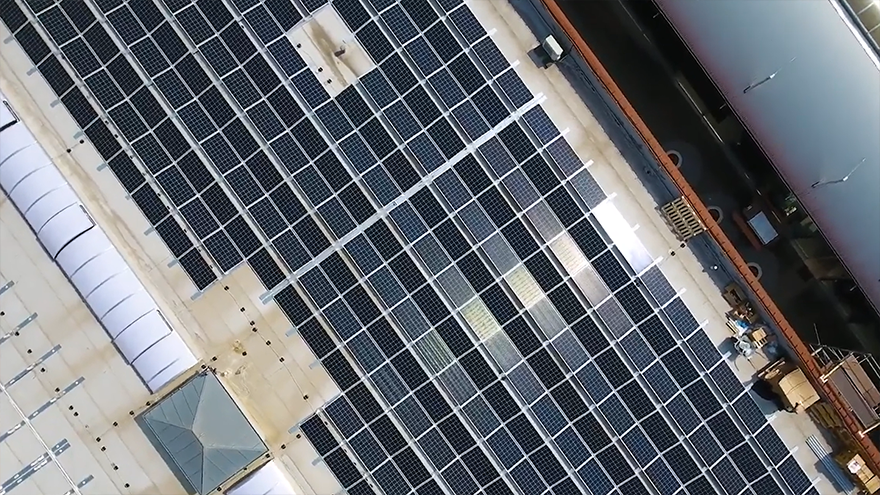Jonathan Silver, Chair of Apollo’s Global Climate Advisory Council, discusses key themes from this year’s CERAWeek conference in Houston, which convened policymakers, corporate leaders, and investors to discuss the future of global energy markets.
1. Following the conference, we’ve seen quite a lot of discussion on energy expansion. Was this a notable change from previous years and what were the key takeaways?
Discussions reflected a broader agenda than in years past, with a focus on balancing climate goals, financial performance and energy security. The key question for policymakers and executives was not just how to reduce emissions, but how to do so while meeting rising global demand and maintaining geopolitical stability.
Nearly every conversation touched on the need to expand energy production, with a general consensus that meeting future needs will require a variety of new approaches and a mix of sources. Fossil and nuclear power solutions were discussed more frequently and positioned as necessary components of a more resilient energy system. Natural gas, in particular, was a focal point—both as a near-term solution and as a long-term component of global energy markets. There was much less attention paid to renewable power and several speakers went so far as to criticize renewable energy sources, characterizing them as expensive and difficult to scale.
For the U.S., the emphasis was on increasing natural gas production and exports to enhance energy security and drive economic growth. Government officials announced infrastructure initiatives, including new pipeline expansions and the approval of a liquefied natural gas (LNG) export terminal in Louisiana. Meanwhile, for Europe, conversations centered on securing stable gas supplies amid geopolitical uncertainty. Publicly, leaders emphasized the need to secure diversified, reliable sources of power with the understanding that trade agreements could shift over time.
Despite all the individual interests across sectors and geographies, a common agreement was that our current global energy infrastructure is insufficient to meet long-term demand, and investment across multiple sources will be critical to ensuring stability and growth.
2. What role does Artificial Intelligence play when thinking about the future of energy?
AI came up in nearly every presentation and conversation as a global trend that has reframed energy demand projections. According to an estimate from NextEra Energy, global power demand will rise by 55% over the next two decades, and data centers will drive 17% of the growth. We also saw projections from the International Energy Agency that electricity consumption from data centers could double between 2022 and 2026.
We face challenges in both the immediate and longer-term. Right now, the decision is around what energy sources are viable options with enough output to start fueling our AI development ambitions immediately—whether that be natural gas, renewables or some combination. Nuclear power was included in the mix but not always seen as sufficiently timely to be relevant. Over the long term, there was a lot of conversation about infrastructure development to enable reliable energy production, storage, and transfer at scale.
3. There’s been much discussion about the importance of cooperation between the public and private sectors. Were there any notable differences between these two groups?
Nearly all the policymakers focused largely on the need for more energy production to support innovation and industrial growth. In the U.S., that meant placing an emphasis on increasing oil and gas production, permitting reform, and critical mineral access. Many European and Asian policymakers, by contrast, emphasized their continued focus on clean energy expansion and developing related infrastructure.
For the private sector, the primary concern was uncertainty. Energy executives emphasized that the biggest challenge isn’t necessarily regulation itself—it’s unpredictability. One CEO of a global energy producer noted that fluctuating policy priorities make it difficult to commit to multi-decade infrastructure projects, especially for the kinds of capital-intensive projects taking place in power generation and transmission.
“We believe private capital will play a critical role in bridging gaps between economic and environmental objectives, funding projects that enhance energy security while supporting decarbonization.”
Jonathan Silver, Chair of Apollo’s Global Climate Advisory Council
4. Any final takeaways from the conference?
If there was one overarching theme from CERAWeek, it was the need for flexibility. The energy landscape is evolving rapidly, and meeting rising demand will require investment across the entire energy mix—renewables, storage, firm power, and traditional sources. The United States seems increasingly out of sync with the rest of the world on what is required to balance affordability, security and climate change.
While the long-term trajectory of the energy transition remains in focus, the near-term priority is ensuring reliable and scalable power. We believe private capital will play a critical role in bridging gaps between economic and environmental objectives, funding projects that enhance energy security while supporting decarbonization.
Tags








